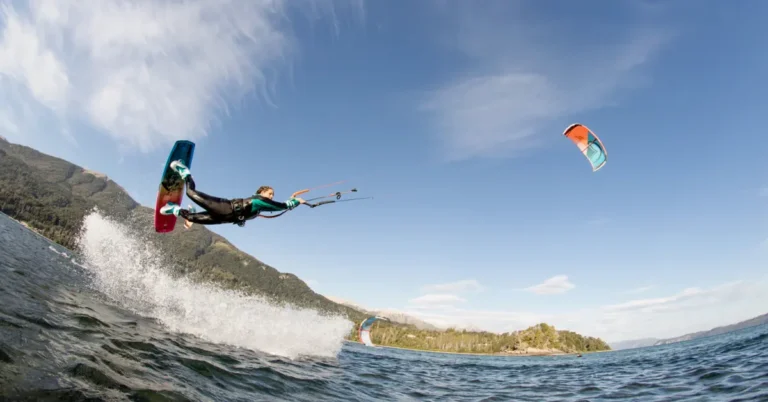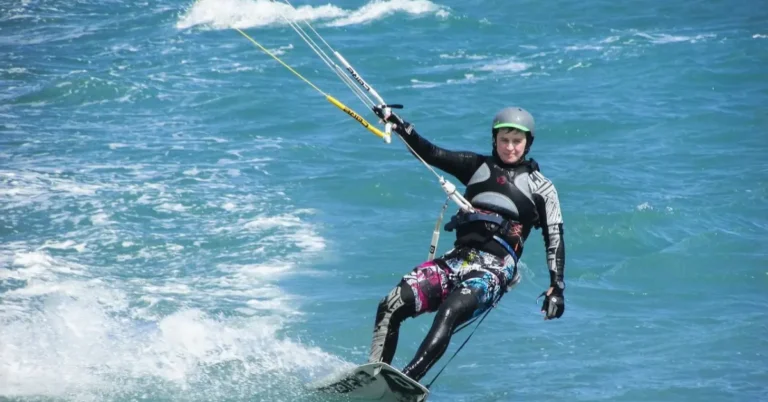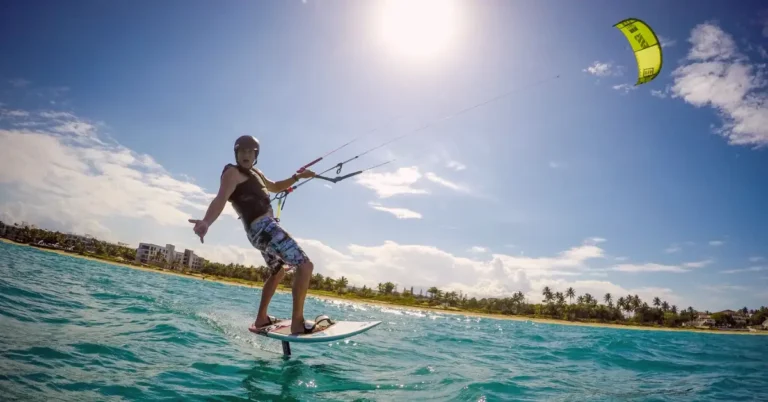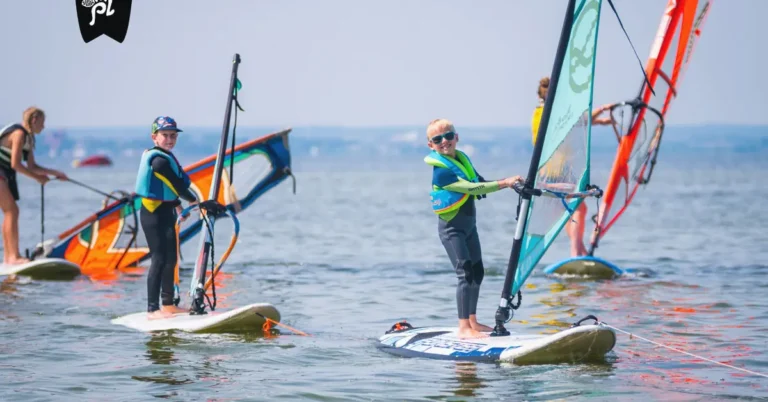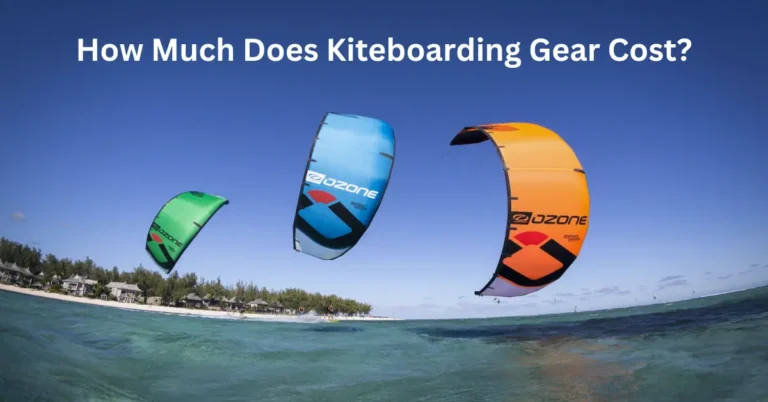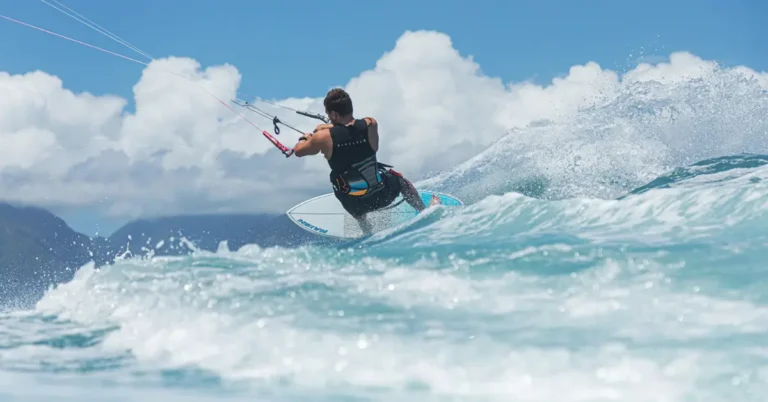How Long Does It Take To Learn To Kitesurfing?
Regardless of your learning pace, don’t expect to master kiteboarding in a single day. For most students, it will require several hours of dedicated lessons to grasp the basics. Typically, schools conduct lessons in two to three-hour intervals.
Curious about the time commitment required to learn kitesurfing? Well, how long does it take to master this exhilarating sport? If you aim to ride upwind, you can expect to invest approximately 15 to 20 hours in kitesurfing lessons, which include guidance from an instructor.
The actual duration of your learning journey will be influenced by factors such as your aptitude for learning, physical fitness, prevailing wind and water conditions, the frequency of your practice sessions, and the caliber of your instruction.
Also Read: Kitesurfing vs Windsurfing
Why does take a certain amount of time to learn to kite?
Mastering control over the kite, board, and your body is quite intricate. Once you delve into it, you’ll discover the sheer enjoyment and addictiveness of this sport. However, you’ll quickly realize that learning demands a significant investment of time and effort.
Kiteboarding engages both cognitive and physical processes, including hand-eye coordination, reaction time, balance, muscle memory, and strength, among others.
To progress safely and efficiently, it’s crucial to dedicate time under the guidance of a qualified instructor. Developing timing and coordination is a major factor contributing to the time required for learning.
Maneuvering the kite is exhilarating, yet it necessitates simultaneous actions such as steering left and right while adjusting the control bar’s position for the right kite angle.
Moreover, executing maneuvers like the water start demands a harmonized effort of piloting the kite, maintaining balance on the board, and sustaining proper body positioning.
Kiteboarding entails mastering various skills and integrating them seamlessly to experience the unique sensation of gliding over the water.
Breakdown of kiteboarding lessons step by step
Breaking down your kiteboarding lessons step by step, your journey begins with the first session, where you acquaint yourself with the fundamentals of the sport.
This involves comprehensive ground training, focusing on kite piloting, control bar manipulation, safety protocols, kite launching and landing procedures, and other essential skills. Mastery of kite control on land is paramount before progressing further.
Moving on to the second phase of your course, you transition to the water, where you’ll start piloting the kite in a dynamic environment. This phase typically begins with body dragging, utilizing the kite to propel yourself through the water, followed by learning the water start technique.
Mastering watering may require additional time, given the integration of various skills necessary for successful riding. This stage also presents an opportunity to reinforce recently acquired skills, such as retrieving the board through body dragging.
In the third and final part of the course, the focus shifts to transforming you into an independent kiteboarder. Here, emphasis is placed on board riding proficiency, mastering turns, and crucially, learning how to ride upwind.
It’s common during this stage to experience instances where you find yourself predominantly riding downwind, leading to what’s humorously termed the “walk of shame” back up the beach. This phase marks the culmination of your lessons, equipping you with the skills needed to navigate the waters independently.
Embracing Patience with the Wind
Kiteboarding’s progress can be affected by the whims of Mother Nature herself. Since kiteboarding relies heavily on wind conditions, it’s essential to make the most of lessons, even in varying wind strengths.
Admittedly, coordinating lessons with erratic wind patterns can pose challenges, particularly when they clash with our busy schedules. Nonetheless, with some flexibility, it’s possible to find opportunities for lessons amidst these obstacles.
Although it’s advisable to maintain consistent practice without prolonged breaks between lessons, a competent instructor can efficiently evaluate your skills and provide targeted guidance, ensuring you catch up swiftly if you’ve been away from the sport for a while.
The key is to adapt to the unpredictable nature of the wind while remaining committed to your kiteboarding journey.
Mastering the sport at higher levels
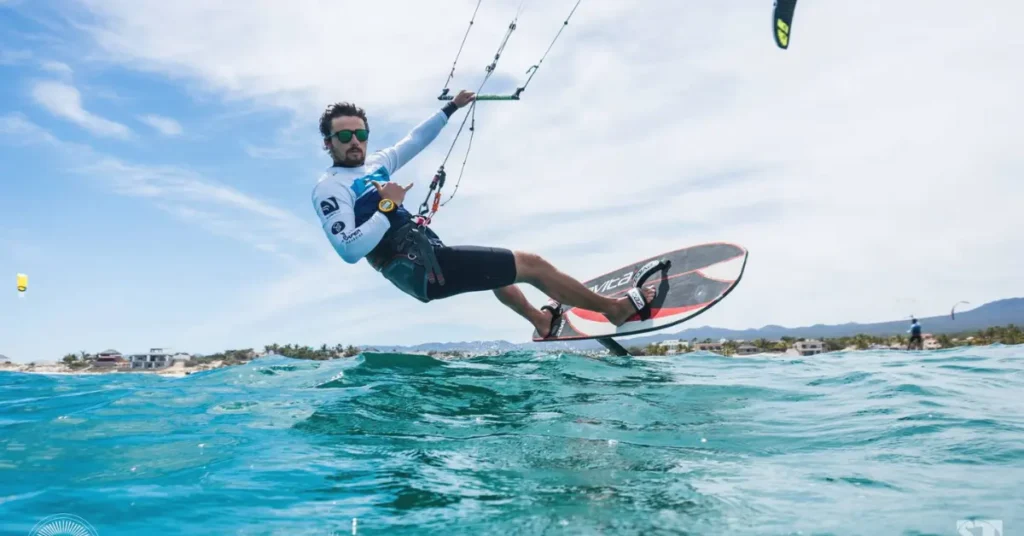
Mastering the sport at higher levels entails dedicating additional time to progress beyond beginner skills. In your initial full season, typically spanning 3-4 months of favorable wind conditions, you can venture into learning freestyle tricks like jumps and grabs.
Transitioning to riding a directional surfboard for wave riding is a feasible step following proficiency on a twin-tip board. Mastering surfing in smaller waves (<1 meter) becomes achievable, although tackling larger conditions (2+ meters), especially strapless, may necessitate two or more seasons of gradual buildup.
The hydrofoil learning curve has been streamlined with advancements in gear, yet achieving water starting and basic riding typically demands one to two seasons of focused practice.
Advancing to more intricate maneuvers like jibes and foot switches may require an additional two to three seasons of dedicated effort.
Each discipline within kiteboarding presents unique skill progressions, requiring time for mastery. Seeking guidance from an IKO Coach through courses such as the Kiteboarder Level 5 – Evolution can expedite progress and help you reach your riding goals more efficiently.
Do you want to speed up kite learning?
Firstly, prioritize selecting a conducive learning environment. Aim for consistent wind conditions, ideally ranging between 15-20 knots. Steer clear of crowded areas, shallow waters with submerged reefs, and any potential land hazards.
Secondly, prioritize your physical fitness. Incorporate activities like yoga, stretching, or functional mobility training to enhance your flexibility and overall conditioning. Maintaining good aerobic fitness is equally crucial for optimal performance during lessons.
Lastly, cultivate a positive mindset. Approach each lesson with optimism and resilience, understanding that initial attempts may not always yield the desired results.
Embrace setbacks as part of the learning process, and let them fuel your determination rather than deter you. With the right environment, physical preparedness, and a positive attitude, you can expedite your journey to mastering kiteboarding.
Get on now and start learning kiteboarding!
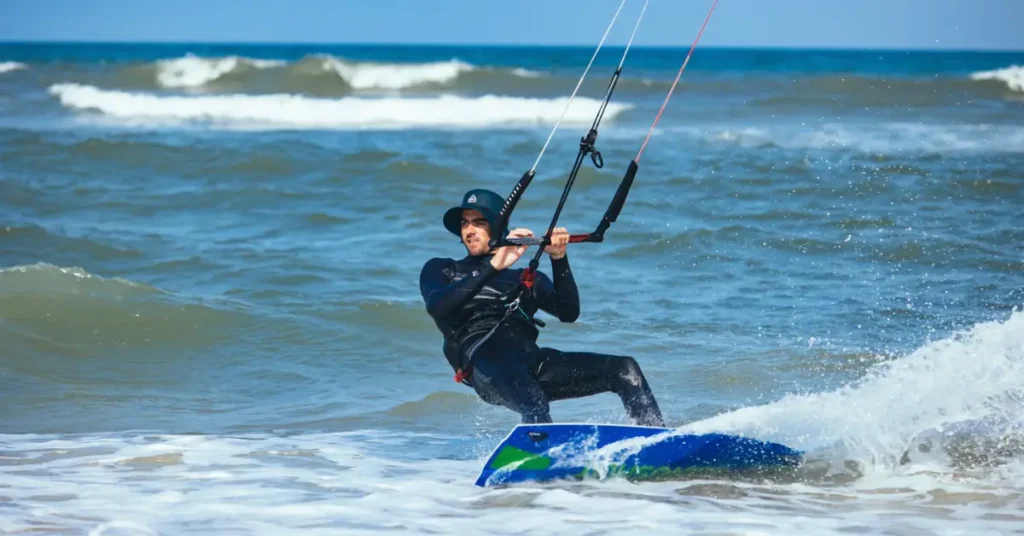
Kiteboarding offers an exhilarating journey with endless possibilities for advancement. Despite over a decade of experience, I continue to discover new facets of the sport.
It’s a testament to its depth and complexity that keeps enthusiasts engaged for years. While kiteboarding can be learned relatively quickly, achieving mastery is a lifelong pursuit.
As an IKO Instructor, mastery means seamlessly executing skills regardless of conditions. I aim to guide students towards this level of proficiency, enabling them to savor the sport independently and to its fullest extent.
Do you want to get there too? Well, the ultimate way to speed up your learning is to start your lessons right now! So make sure to check out the IKO Training Calendar for all the available courses with an IKO Instructor near you.
Frequently Asked Questions
Conclusion
Irrespective of the time it takes, don’t expect to master kiteboarding in just one day. For most students, learning the basics of this sport requires investing numerous hours in lessons. Typically conducted in two to three-hour sessions, schools offer structured blocks to facilitate learning.
While the journey to mastering kitesurfing spans between 6 to 12 hours of instruction, it’s essential to approach this estimate with flexibility. Progress may often exceed the 12-hour mark and rarely falls below 6 hours.
However, don’t be disheartened by this reality. Remember, flying a kite isn’t an innate skill; it’s acquired through practice and patience. Every kiteboarder, regardless of skill level, has traversed this challenging yet immensely rewarding learning curve. Embrace the process, and you’ll soon find yourself gliding effortlessly over the waves.

